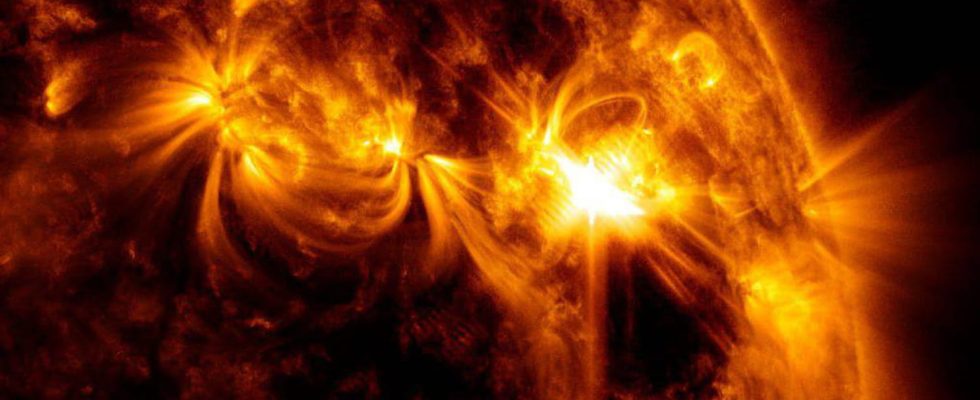A new study reveals that the sun’s peak activity is coming much faster than expected. And the effects for the Earth are significant.
If “terrestrial” weather is a phenomenon of public interest, solar weather is much less so. It is indeed the work of scientists and in particular astronomers. However, its effects on the planet are very real and they can have a concrete impact on our daily lives. One of the missions of astronomers is to monitor the activity of the Sun and in particular the intensity of this activity. Three astrophysicists, Priyansh Jaswal, Chitradeep Saha and Dibyendu Nandy from the “Center of Excellence in Space Sciences India” have published a study on this subject in the scientific journal Monthly Notices of the Royal Astronomical Society, specializing in astronomy and astrophysics.
Contrary to the latest forecasts which predicted a peak in solar activity in July 2025, these researchers predict that the peak could actually occur from January 2024, and probably within a few months. Concretely, a peak in solar activity could lead to solar storms, more commonly referred to as “solar flares”. These flares correspond to a release of energy coming from the surface of the sun in the form of electromagnetic waves. They are notably responsible for the northern lights and can also threaten satellites. This is why such a phenomenon could disrupt electrical networks and interfere with radio communications.
The results of this new study demonstrate that the systems for observing solar activity currently used by the majority of the scientific community would not be so adequate. Although it is a scientific certainty that solar activity is cyclical, it remains quite mysterious. These cycles last approximately 11 years. When moving from one cycle to another, a peak in solar activity occurs, immediately followed by a decrease in this activity. Scientists determine this tipping point by observing sunspots. But the Indian study calls this method into question. Indeed, forecasts from the American Oceanic and Atmospheric Observation Agency, the National Oceanic and Atmospheric Administration (NOAA), predicted a peak of activity in July 2025 but the reality of the phenomena contradicted these predictions.
Solar activity turns out to be much more powerful than expected. So much so that NOAA has reversed these forecasts and also estimates that the peak of activity could take place between January and October 2024. While scientists are aware that there are few ways to protect ourselves against such a phenomenon, Further studies, in particular on the magnetic activity of the Sun, could help anticipate its consequences.
